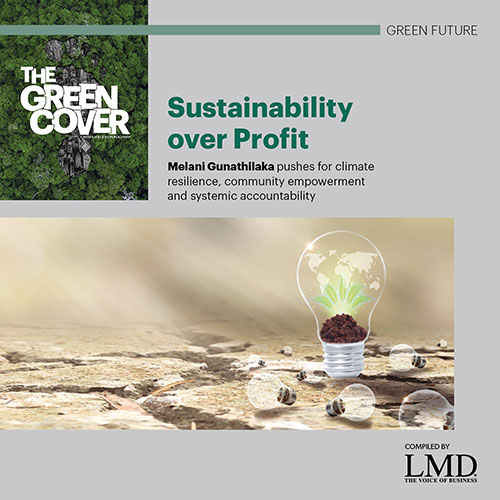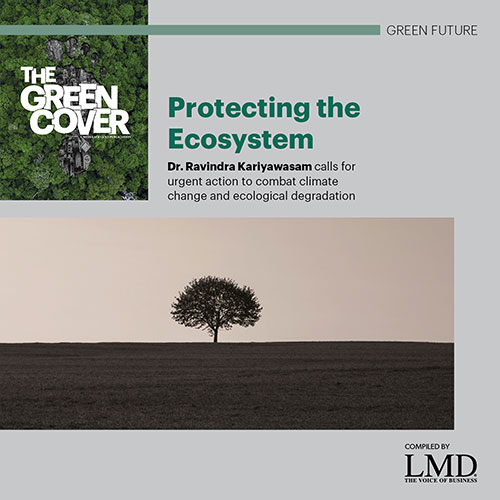CLEAN ENERGY
Green Economy Framework
Suranga Karavita highlights the importance of energy security for Sri Lanka’s future
Sri Lanka has been experiencing an energy crisis as the events of the past year bear witness with the shortage of fuel and power islandwide. Although the energy crunch has been resolved in the short term, the country is making a transition to a green economy in accordance with the government’s plans.
As a party to the Paris Agreement, Sri Lanka committed to reducing greenhouse gas emissions by 14.5 percent by 2030, generating 70 percent of its electricity requirement from renewable energy by 2030 and reaching carbon neutrality in electricity generation by 2050 with no further capacity additions of unabated coal power generation.

To achieve this, the government appears to be setting up the necessary infrastructure that breaks free from the institutional framework of the past.
Technical Coordinator of United Nations Development Programme (UNDP) Suranga Karavita says: “It’s an ambitious plan but certainly the right path to take. If Sri Lanka had been energy secure, the economy would not have been so badly affected during the crisis. The contribution of clean energy to the country’s energy mix is only about 45 percent, which needs to be improved.”
Sri Lanka’s electricity demand is estimated to grow by 4.7 percent between 2022 and 2046 while biomass has been identified as the primary thermal energy source with a contribution of 74.4 percent to industrial energy demand, and 57.2 percent of household and commercial sector demand.
Commenting on the potential roadblocks to achieving clean energy in the country, Karavita says: “The main polluters in terms of sectors are energy and transport as Sri Lanka primarily depends on fossil fuels for these.”
“There is awareness among these sectors of the pollution they are causing and the nation has gone on to ratify international obligations to meet emission targets,” he notes, adding that “it has developed nationally determined contributions (NDCs) to chalk the way forward.”
In the present context of the economic crisis, mobilising financial resources for green projects is a challenge, he admits.
Karavita reveals that there is a strong set of systems and regulations in place for solar rooftop projects and this programme can be implemented much quicker than setting up ground mounted solar power generation plants.
While he is satisfied with the framework for the energy sector, he believes much more can be done in the transport sector to improve regulations.
To ensure meaningful clean energy deployment, a framework should be built to minimise pollution from the disposal of clean energy technologies. For this, sound technical guidance and a few pilot projects should be carried out to study if they suit local conditions, as well as ensure that they comply with international conventions.
The strategy for Sri Lanka to achieve its goal of clean energy is in place, in Karavita’s view: “The unbundling of the Ceylon Electricity Board (CEB) is the right move to increase competition and extend better benefits to consumers. By inviting the private sector to invest in the energy sector, the government is using it to improve cost efficiency, reliability, productivity and competition so that consumers ultimately benefit.”
As for the electricity tariff hikes in recent months, he believes that “cost reflective tariffs are essential and the norm the world over to sustain the energy sector. The economic crisis also brought under the microscope the need to upgrade the nation’s transport network, which will be good for the environment.”
“Sri Lanka needs drastic improvements in the transport sector and the government should consider transitioning to e-transport as a way to achieve its clean energy targets,” Karavita asserts, noting that “this should be accompanied by strong environmental guidelines and frameworks for sustainable development.”







